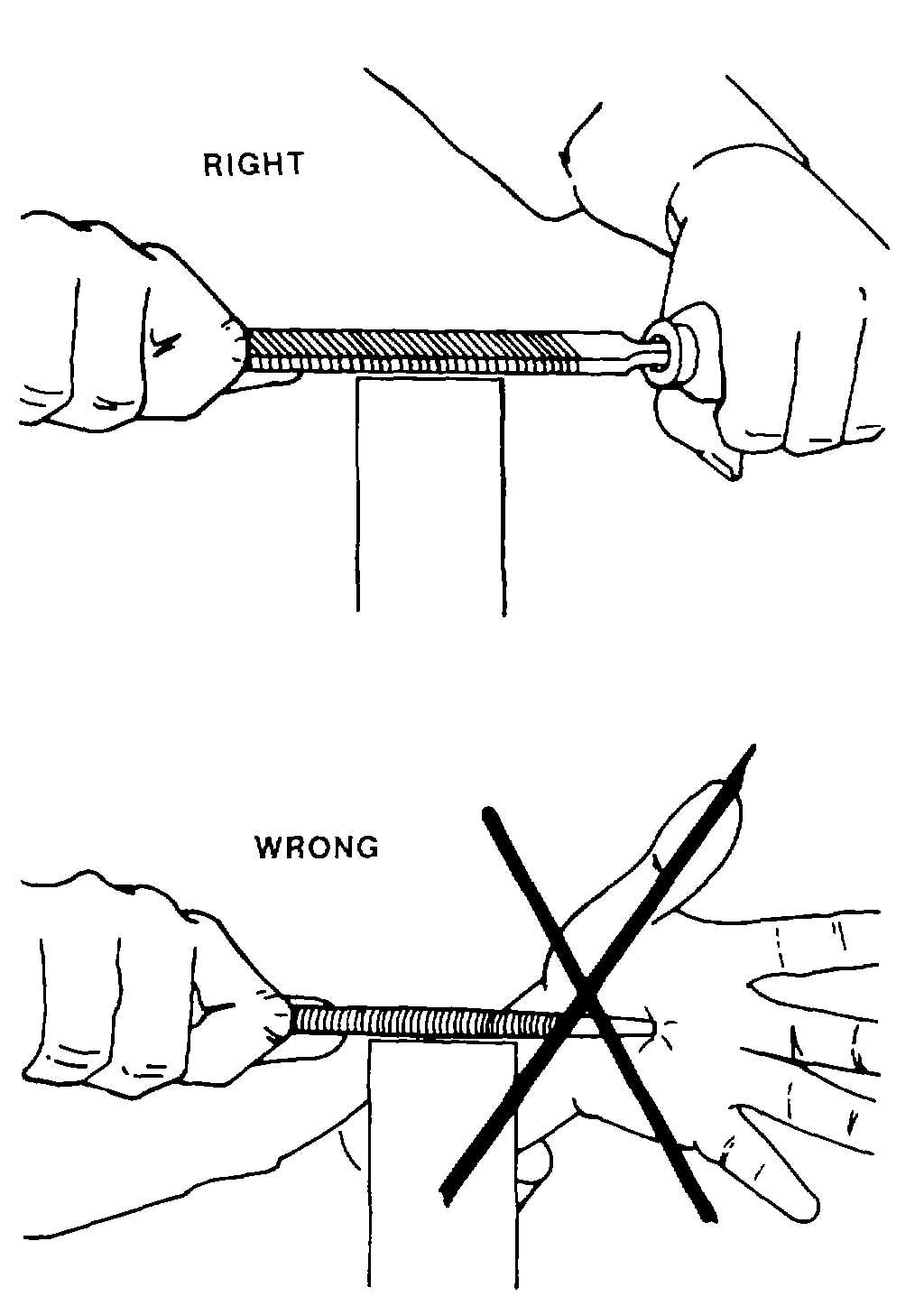TM 1-1500-204-23-9
Figure 4-74. Curved Tooth File
*
If the file is designed to be used with a
handle, do not attempt to use it without
the handle. Holding the tang of the file in
the hand while filing may result in serious
injury (see figure 4-75).
*
Do not use a file for prying. The tang end
is soft and bends easily, while the body of
the file is hard and brittle, and will snap
under a very light bending force.
*
Do not hammer on a file. This may cause
the file to shatter.
c.
Selection. Certain file grades are most effective
on certain metals. Following are the suggested grades
of files that should be used on the applicable metals.
NOTE
*
For heavy, rough cutting, use a large, coarse,
double-cut file.
*
For finishing cuts, use a second- or smooth-cut,
single-cut file.
*
For small work, use a short file. For medium-
sized work, use an 8-inch file. For large work,
use a file that is most convenient.
(1)
Cast iron. When working on cast iron, start with
a bastard-cut file and finish with a second-cut file.
(2)
Soft metal. When filing soft metal, start with a
second-cut file and finish with a smooth-cut file.
(3)
Hard steel When filing hard steel, start with a
smooth-cut file, and finish with a dead-smooth file.
Figure 4-75. Use of File Handle
(4)
Brass or bronze. When filing brass or bronze,
start with a bastard-cut file and finish with a secondor
smooth-cut file.
(5)
Aluminum, lead, or babbitt. When filing
aluminum, lead, or babbitt metal, use a standard-cut
curved tooth file.
d.
Use. Using a file is an operation that is nearly
indispensable when working with metal. Most filing
operations
can
be
classified
as
crossfiling
and
drawfiling. There are some precautions, however, that
must be taken when filing.
*
The strokes with the file should be long
and smooth and there should not be more
than 40 strokes per minute to prevent
overheating of the teeth.
4-26



